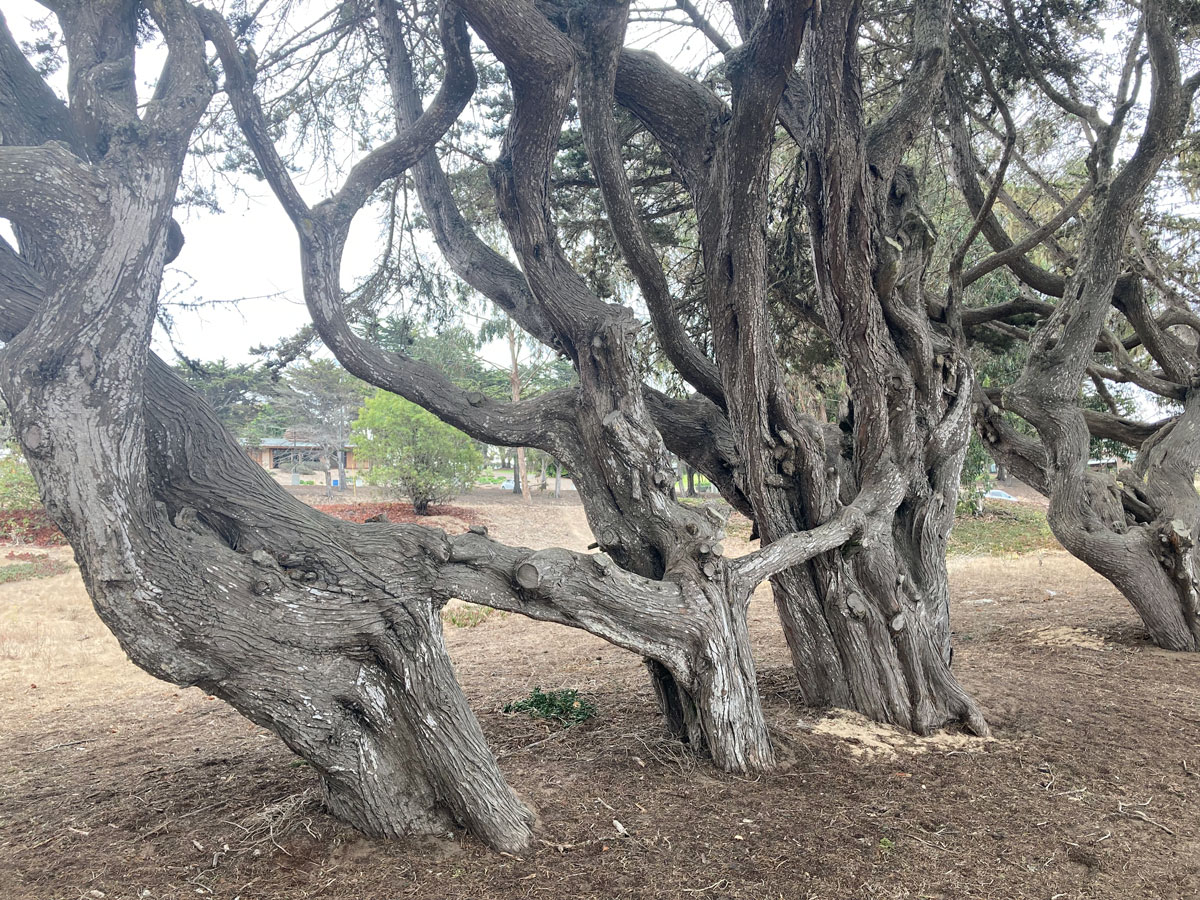
Marina Suggested Tree List
Marina Trees — pick the right tree for the right spot!
Welcome to the updated Marina tree page! Our community needs more healthy trees to provide beauty, character and identitify a sense of place. Our club wants to help by providing our collective observations regarding trees in Marina to encourage planting “the right tree for the spot.”
New Tree List – downloadable pdf here
This list reflect some of the hardiest trees observed historically growing in Marina. The parameters for selection include wind and drought tolerance, affinity to poor sandy soils and marine salt air conditions. Other considerations include maintenance, sidewalk lifting, power line interference, sidewalk strip suitability and leaf litter. There are many other species that will grow here that may not meet all of the critera and may grow well with more care in a protected spot. The historical tree list can be explored further down the page.
- Ceanothus ‘Ray Hartman’ California Wild Lilac
- Laurus ‘Saratoga’ Saratoga Bay Laurel
- Heteromeles arbutifolia Toyon
- Magnolia grandiflora “Little Gem” Little Gem Magnolia
- Rhamnus alaternus Italian Buckthorn
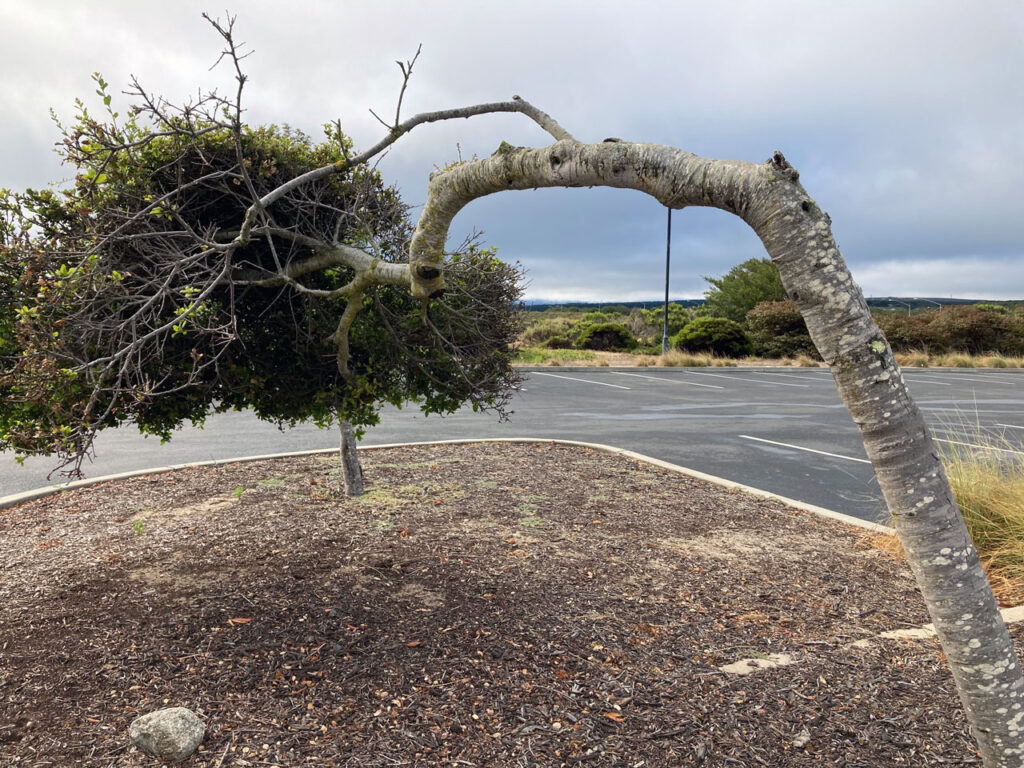
- Allocasuarina verticillate (Casuarina stricta) Mountain She-Oak, Beefwood,
- coast beefwood
- Arbutus “Marina” Strawberry tree
- Arbutus unedo Strawberry tree
- Callistemon citrinus (Melaleuca citirinus) Lemon Bottlebrush
- Casaurina stricta (see Allocasuarina verticillate) Coast Beefwood, Drooping She-Oak
- Corynocarpus laevigatus New Zealand Laurel
- Eriobotrya japonica Loquat
- Ilex aquifolium English Holly
- Melaleuca ericifolia Heath Melaleuca, Swamp paperbark
- Melaleuca linariifolia Flaxleaf Paperbark
- Melaleuca quinquenervia Cajeput Tree
- Melaleuca styphelioides Black Tea Tree, Prickly Leaf Paperbark
- Pittosporum crassifolium Karo Tree
- Podocarpus gracilior Fern Pine
- Prunus ilicifolia ssp lyonii Catalina Cherry
- Tristaniopsis laurina Small-Leaf Tristania, Water gum
- Searsia lancea (Rhus lancea) African Sumac

- Cupressus macrocarpa Monterey Cypress
- Cinnamomum camphora Camphor Tree
- Geijera parvifiora Australian Willow
- Corymbia ficifolia Red flowering gum
- Eucalyptus nicholii Willow-leaf peppermint
- Eucalyptus polyanthemos Silver Dollar gum
- Lophostemon confertus Brisbane Box
- Lyonothamnus floribundus asplenifolius Catalina Ironwood
- Pinus canariensus Canary Island Pine
- Pinus halepensis Allepo Pine
- Pinus pinea Italian Stone Pine
- Pinus radiate Monterey Pine
- Pinus Torreyana Torrey Pine
- Quercus tomentella Island Oak
- Quercus agrifolia Coast Live Oak
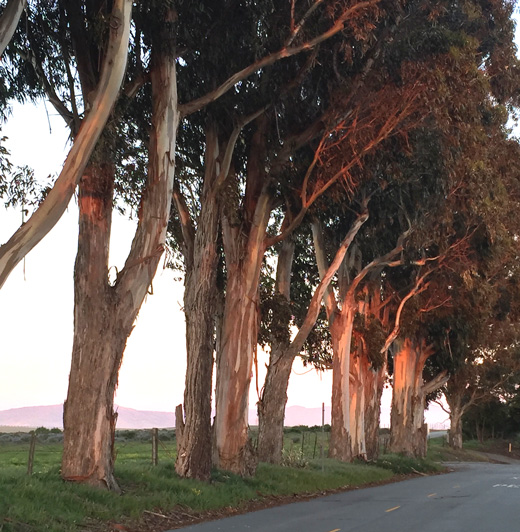
- Ginkgo biloba ‘Autumn Gold,’ ‘Princeton Sentry,’ ‘Saratoga’ Maidenhair tree, Ginkgo
- Platanus x acerifolia ‘Columbia’ London plane, sycamore
- Chamaerops humilis Mediterranean Fan Palm
- Cordyline australis Dracaena Palm
- Phoenix canariensis Canary Island Date Palm
- Phoenix dactylifera Date Palm
- Washingtonia filifera California Fan Palm
- Washingtonia robusta Mexican Fan Palm
For further information on each tree visit the Cal Poly Select-a-Tree list

- Allergen Species
- Cold intolerance
- Disease
- Invasive Species
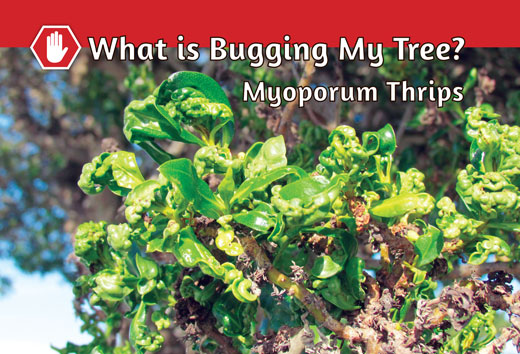
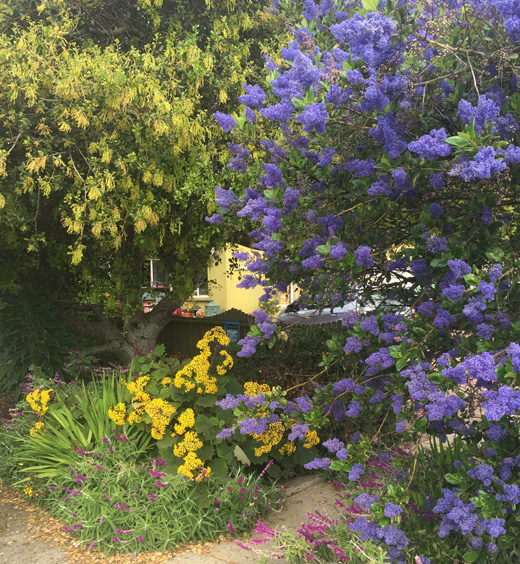
For more information on Arborists, Fruit Trees, Plant Nurseries and local informational links visit our links page.
